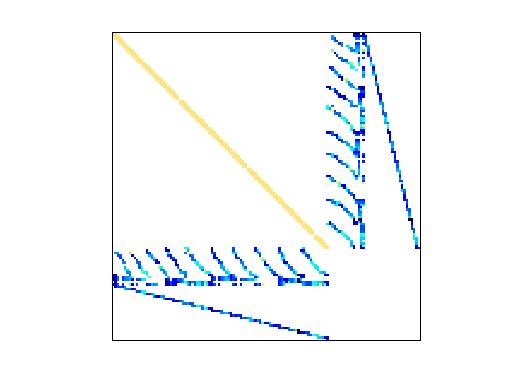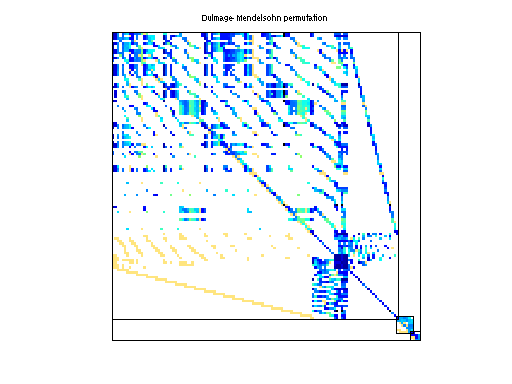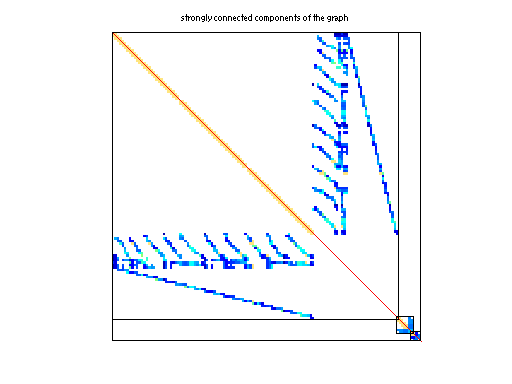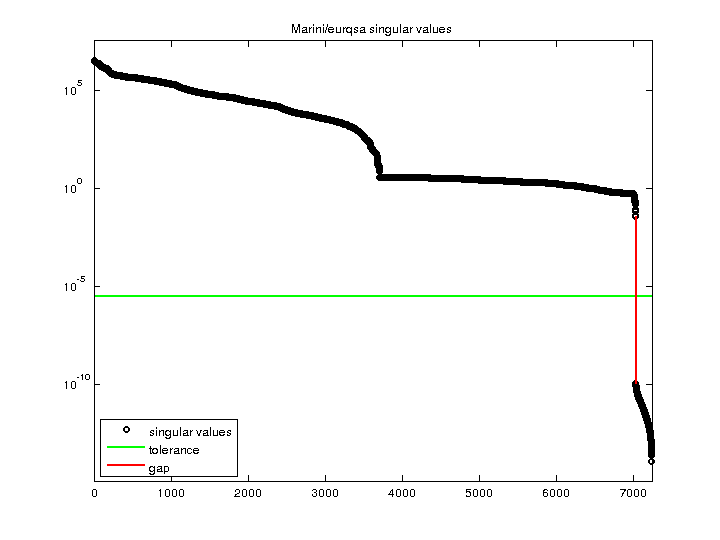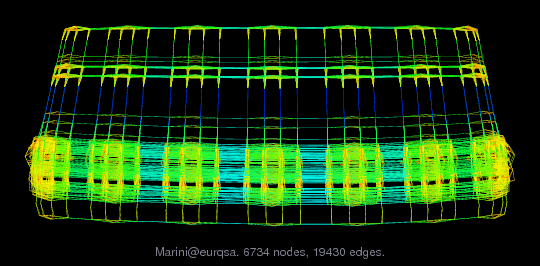Marini/eurqsa
Economic time series reconciliation; Di Fonzo (Univ Padua) & Marini (ISTAT)
| Name |
eurqsa |
| Group |
Marini |
| Matrix ID |
1891 |
|
Num Rows
|
7,245 |
|
Num Cols
|
7,245 |
|
Nonzeros
|
46,142 |
|
Pattern Entries
|
46,142 |
|
Kind
|
Economic Problem |
|
Symmetric
|
Yes |
|
Date
|
2008 |
|
Author
|
T. Di Fonzo, M. Marini |
|
Editor
|
T. Davis |
| Structural Rank |
7,245 |
| Structural Rank Full |
true |
|
Num Dmperm Blocks
|
3 |
|
Strongly Connect Components
|
3 |
|
Num Explicit Zeros
|
0 |
|
Pattern Symmetry
|
100% |
|
Numeric Symmetry
|
100% |
|
Cholesky Candidate
|
no |
|
Positive Definite
|
no |
|
Type
|
real |
| SVD Statistics |
| Matrix Norm |
3.475770e+06 |
| Minimum Singular Value |
1.238881e-14 |
| Condition Number |
2.805573e+20
|
| Rank |
7,035 |
| sprank(A)-rank(A) |
210 |
| Null Space Dimension |
210 |
| Full Numerical Rank? |
no |
| Download Singular Values |
MATLAB
|
| Download |
MATLAB
Rutherford Boeing
Matrix Market
|
| Notes |
Economic statistics are often published in the form of time series, as a
collection of observations sampled at equally-spaced time periods (months,
quarters). Economic concepts behind such statistics are often linked by a
system of linear relationships, deriving from the economic theory. However,
these restrictions are rarely met by the original time series for various
reasons. Then, data sets of real-world variables generally show
discrepancies with respect to prior restrictions on their values. The
adjustment of a set of data in order to satisfy a number of accounting
restrictions -and thus to remove any discrepancy -is generally known as
the reconciliation problem.
The matrix comes from a real application composed of 183 quarterly time
series observed over 28 quarters, which form the system of European
national accounts by institutional sectors (EURQSA). Then, the number of
observations to be reconciled is n = 28 x 183 = 5124. The variables are
connected by a system of 30 linear relationships. Moreover, each quarterly
time series must be in line with the same variables observed yearly (due
to different compilation practices quarterly and annual estimates might
differ). The total number of constraints of the system is k = 2121. On
the whole, matrix A has dimension 7245, with block (1,1) of dimension 5124.
|
